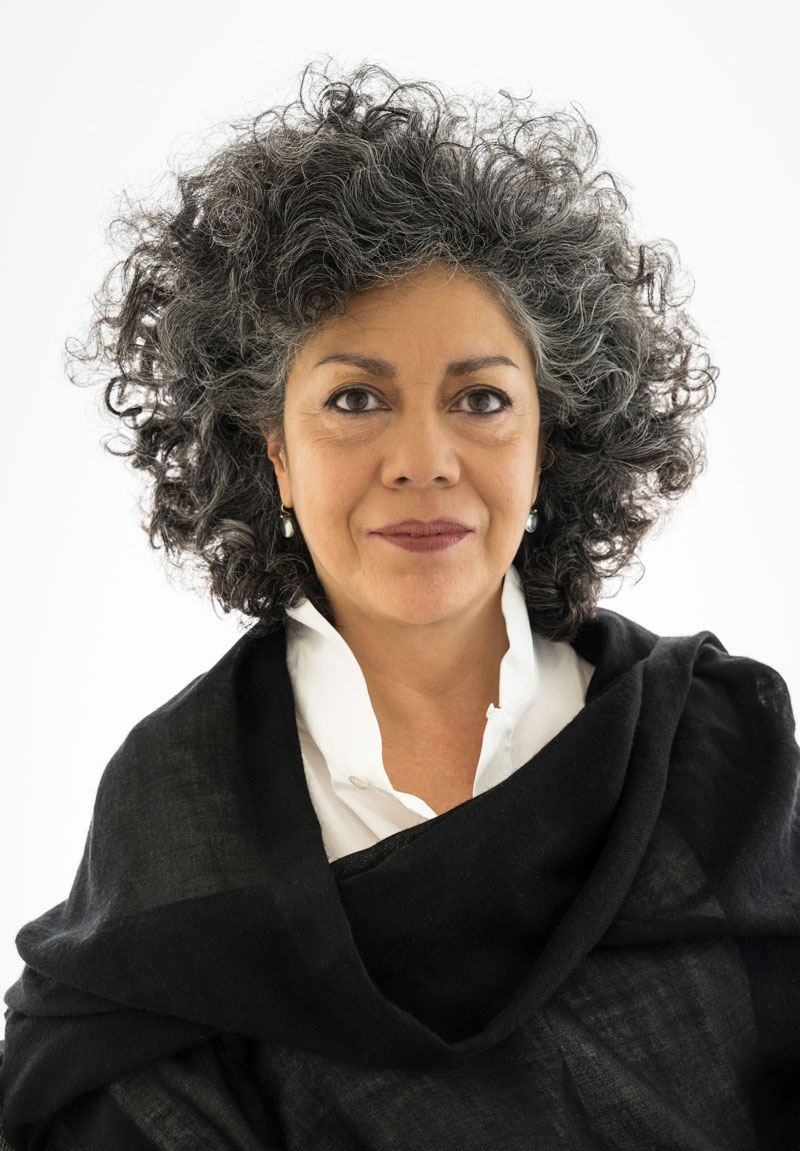This Director Refuses to Let Dallas be a Shallow City: How the Nasher’s Bold Moves Change Everything
BY Patricia Mora // 10.12.15
Doris Salcedo, inaugural winner of the Nasher Prize. (Photo by David Heald)
If a contemporary cartographer were called upon to limn a metaphorical shape for Dallas, it would surely spill with sheen left, right and center. After all, the city is known for its testosterone-driven entrepreneurial zeal and worshipful attention to the likes of Valentino and Patek Philippe.
However, this shorthand of the city’s mythos was reinvented when I recently spoke with Jeremy Strick, director of the Nasher Sculpture Center. We sat in the sun on the first gorgeous day of autumnal weather and discussed the selection of Columbian-born artist Doris Salcedo as the inaugural recipient of the museum’s international prize. The conversation, however, meandered; not only did Strick clarify the import of Salcedo’s work, he quietly underscored what the role of her art means for “The City That Shops.” And, quite surprisingly, he found unsettling art and sleek shimmer to be more companionable than contradictory. Strick’s thinking is nuanced and lovely, and sharing the conversation is a kind of luxury I’ve only rarely experienced. After all, pairing bangled couture and the ravaging consequences of political catastrophe is hardly accomplished on a daily basis. However, it’s a détente — thanks to Strick and the Nasher — that the city can now experience with lucidity and an openness we’ve never before witnessed.
Consider this: In 2002, Salcedo placed 280 chairs at the Palace of Justice in Bogotá “to pay homage to those killed here in a failed guerrilla coup seventeen years earlier.” Then, in 2003, she filled a space between two buildings at the Istanbul Biennial with 1,550 chairs “evoking the masses of faceless migrants who underpin our globalized economy.” For those unfamiliar with Salcedo’s work, stacked chairs may seem abstract and bloodless (so to speak). However, looking at her art is the psychic equivalent of pressing on a bruise. It’s deeply painful and begins a slow burn that is understood only via a metaphorical understanding of absence. I observed, and Strick concurred, that if she had opted to work via a literal sensibility — by incorporating human figures into her work, for instance — the loss and absence she captures would suffer diminution.
Thus, even her tables (Plegaria muda, 2008-2010) are evocative and deeply meaningful in ways that mere factual representations can never be. Strick underscores this by noting that her work “stands in for the person — it’s not a substitute.” He gives heft and nuance to understanding Salcedo’s art as metaphor. Moreover, despite the fact that the sheer size of her work is numbing, each piece is carefully painted, etched and arranged. For instance, the aforementioned chairs may look haphazardly arranged, but that’s not the case. Each piece is painstakingly placed. “The time that goes into making her art influences its reception,” Strick notes. Thus, Salcedo’s attention during her work’s construction inexorably captures our emotions and thought processes. To look away after a quick glance would be as graceless as flipping over a table during mid-dinner conversation. Salcedo demands that we slow down in order to be transfixed and transformed. And as with all loveliness, the process is both a burden and a privilege. In fact, if we’re fully awake, it’s the ache for which we ardently long.
Salcedo lives and works in Bogotá, a place that has seen death and damage on an unimaginable scale, and she, of course, has witnessed the phenomenon of “the disappeared.” She states in an online video, “It’s difficult to deal with horrible events and tragic events and then turn all that pain into beauty. That’s something I find perverse.” Then she adds, “On the other hand, I believe that if you want to dignify a human life then you have to come back to beauty.” Thus, we are immediately captured by a kind of emotional and artistic paradox. Salcedo gives us the ultimate dilemma: How to treat death with proper expansiveness and not merely resort to a brand of plangent gorgeousness that never fully addresses violation and vacancy. Strick quotes Salcedo, “The end of politics is death.” So there. And how do we deal with that? How do we “hold” it? It seems metaphor and a dalliance with the unspoken, the concealed, offers the most complete response. And, interestingly, it also seems nearly liturgical.
With that in mind, I asked, “Isn’t it odd that this is being addressed in a style magazine?” He replied, “Well it’s great that you are writing about this in a style magazine.” I have to agree. Then he looked out at the green expanse outside the loggia of the Nasher and murmured, “This walled garden….”
Apparently he finds it as astonishingly lovely as daily visitors do, and it became clear that Dallas, sometimes described as vacuous and soulless, does have a vibrant and pumping heart. It’s located on Flora Street, in the aforementioned walled garden. I nodded and offered, “This is the city’s huge and pumping aorta. It gives Dallas life and depth.” Strick smiled and nodded in the sunlight. Then, reluctantly, we moved on — and I entered downtown traffic with a newly found respect for the city I call home.
Walled garden, indeed. The Edenic metaphor is apt; we revel in the green space, then inevitably we must exit — but (via our imaginations) its presence can be kept intact and given infinite grace. Thus, Salcedo and the Nasher are teaching us much. They’re showing how to hold the invisible and to recognize that it resides in the gloriously luminous space that never acquiesces to the literal. Wisdom is never an accretion of facts. On the contrary, it’s fully beguiling and most thrilling when heavy doses of enigma and paradox are present — and these are all things that are gloriously evident in Salcedo’s work.


_md.jpeg)








